Stepping inside Waley Art (水谷藝術) in Taipei’s historic Wanhua District (萬華區) one leaves the motorcycle growl and air-conditioner purr of the street and enters a very different sonic realm.
Speakers hiss, machines whir and objects chime from all five floors of the shophouse-turned- contemporary art gallery (including the basement).
“It’s a bit of a metaphor, the stacking of gallery floors is like the layering of sounds,” observes Australian conceptual artist Samuel Beilby, whose audio installation HZ & Machinic Paragenesis occupies the ground floor of the gallery space.
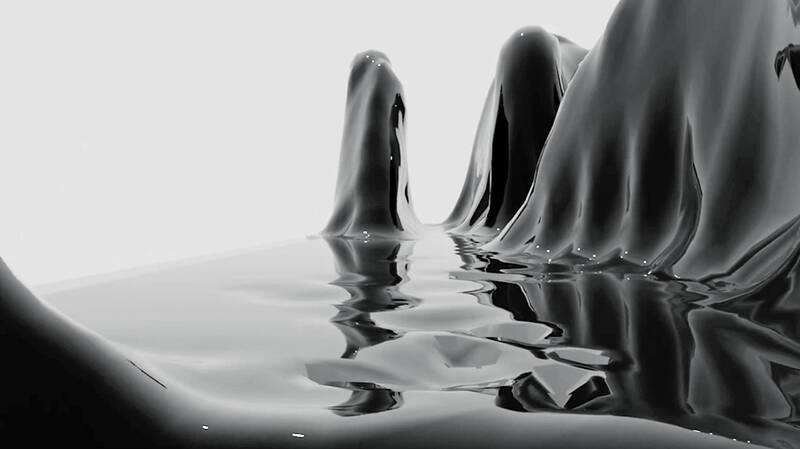
Photo courtesy of Samuel Beilby
He’s not wrong.
Put ‘em in a Box (我們把它都裝在一個盒子裡), which runs until Aug. 18, invites gallery-goers to “think outside the box” with an eclectic array of multi-media installations that explore human relationships with sound.
This brain-expanding exhibition is the brainchild of curator Shih Ya-tien (施雅恬), from Tainan, who says it took her a full year to put the whole project together.

Photo: Thomas Bird, Taipei Times
“The artists are all from different cities, from Helsinki to Perth, but we are all very interested in using sound as the material to make our work,” she says. “We’ve been sharing recordings on a Google Drive.”
Shih says she chose Waley Art to bring her disparate band of sound sculptors together because it’s one of Taipei’s “more experimental spaces” that “welcomes all kinds of novel experiences.”
SCULPTORS OF SOUND
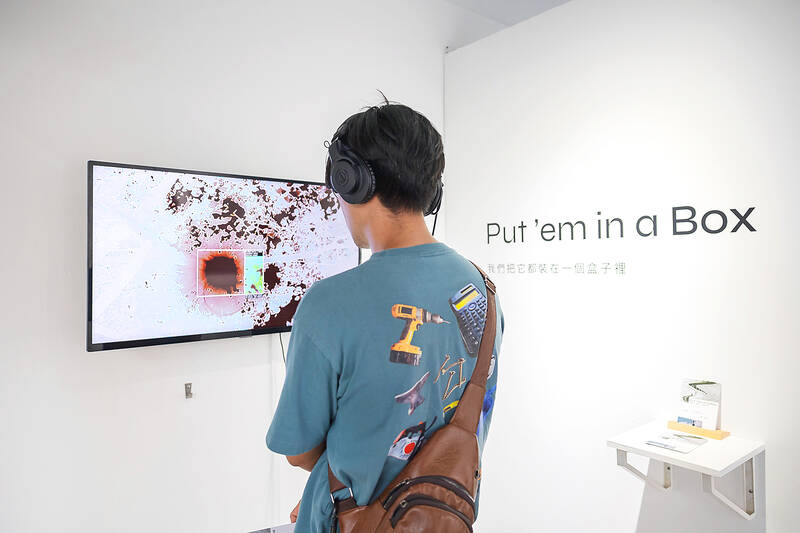
Photo courtesy of Waley Art
Shih says she views cities as “vast containers, encompassing the chirps of birds, barks of dogs,” as well as “the noises of traffic and construction sites.”
Humans have invented devices for the production and reproduction of sound and these devices “act as containers, which facilitate the reception and circulation of intricate, mundane secrets.”
These so-called “containers” are the focus of the exhibition.
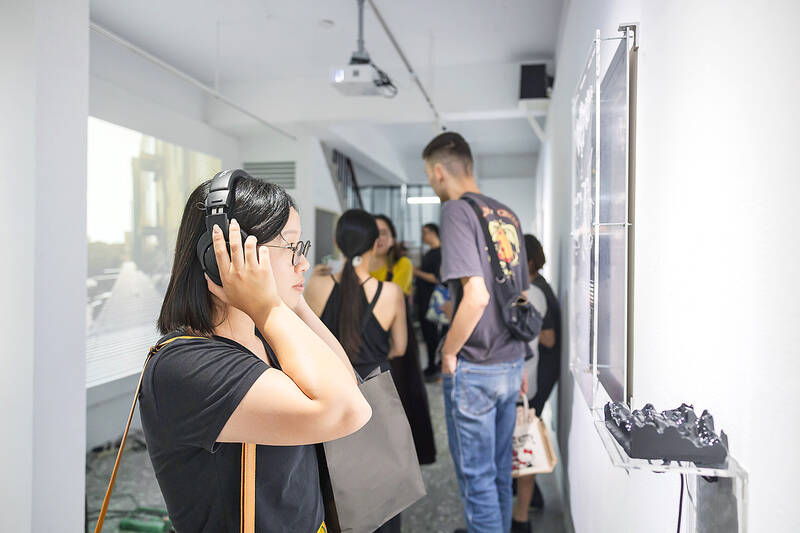
Photo courtesy of Waley Art
The talents of five artists, Chi Po-hao (紀柏豪), Chloe Lin (林雨儂), Sarah Song (宋夏然), Samuel Beilby and Elico Suzuki are employed to investigate sound through their respective creative practices.
The results are as varied as they are unique.
“I went to three automated warehouses in Taiwan,” explains Beilby, “and recorded the electromagnetic frequencies on some microphones, ethereal sounds that you can’t ordinarily hear.”
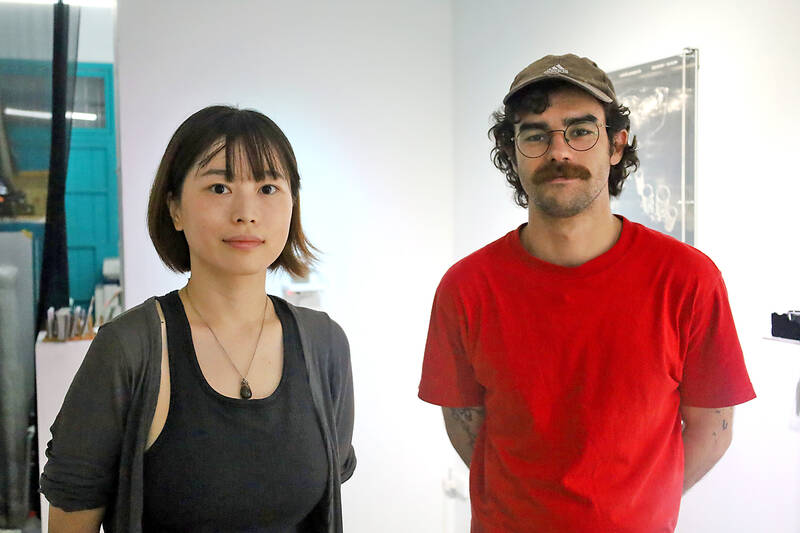
Photo: Thomas Bird, Taipei Times
The robotic noises he captured can be listened to via headphones stationed on the gallery wall next to physical representations of the sounds.
“The sculptures are generated from audio. And the maps map-out my methodology — where I went to grab invisible sounds.”
On the second floor, Tokyo-based sound artist Elico Suzuki has created a startling array of self-made instruments exploring ecological and social themes.
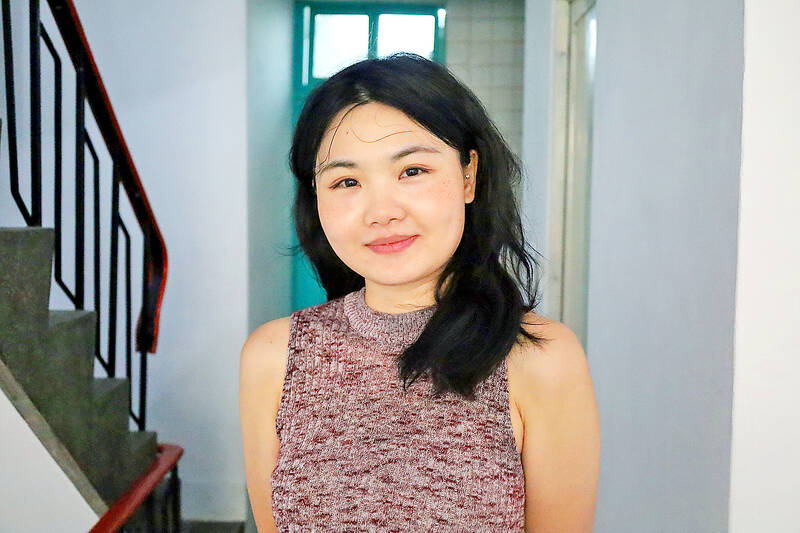
Photo: Thomas Bird, Taipei Times
These include the mixed media object For The Birds whereby a small monitor is attached to a toy piano by a home-made circuit.
Each time a bird takes flight on the monitor screen, it triggers a sensor, which plays a note on the piano.
On the fourth floor, there’s a giant, transparent ball called We Made Sound in a Box (我們在盒子裡發聲音), which amplifies exclamations like “aha.”
It is the creation of Taipei-based creative Chloe Lin who began her sonic journey as a student of classical music at National Taiwan Normal University.
“My instrument is the pipa,” she says of the pear-shaped string-instrument sometimes referred to as a Chinese lute.
Lin started to experiment with improvisation and dance while in Taipei but it wasn’t until she enrolled in a Master’s degree program at the School of the Art Institute of Chicago that she says her audio palette broadened to incorporate different sound textures and approaches.
The result is a visually and audibly arresting creation.
“I collected all different kinds of meaningless sounds from different languages, Japanese, Chinese and English, male or female. I even got AI to mimic a human voice.”
She says that people use sound to express an emotion or momentary feeling. It was these “pure notes” that she collected to make her composition.

Most heroes are remembered for the battles they fought. Taiwan’s Black Bat Squadron is remembered for flying into Chinese airspace 838 times between 1953 and 1967, and for the 148 men whose sacrifice bought the intelligence that kept Taiwan secure. Two-thirds of the squadron died carrying out missions most people wouldn’t learn about for another 40 years. The squadron lost 15 aircraft and 148 crew members over those 14 years, making it the deadliest unit in Taiwan’s military history by casualty rate. They flew at night, often at low altitudes, straight into some of the most heavily defended airspace in Asia.

Beijing’s ironic, abusive tantrums aimed at Japan since Japanese Prime Minister Sanae Takaichi publicly stated that a Taiwan contingency would be an existential crisis for Japan, have revealed for all the world to see that the People’s Republic of China (PRC) lusts after Okinawa. We all owe Takaichi a debt of thanks for getting the PRC to make that public. The PRC and its netizens, taking their cue from the Chinese Communist Party (CCP), are presenting Okinawa by mirroring the claims about Taiwan. Official PRC propaganda organs began to wax lyrical about Okinawa’s “unsettled status” beginning last month. A Global

Taiwan’s democracy is at risk. Be very alarmed. This is not a drill. The current constitutional crisis progressed slowly, then suddenly. Political tensions, partisan hostility and emotions are all running high right when cool heads and calm negotiation are most needed. Oxford defines brinkmanship as: “The art or practice of pursuing a dangerous policy to the limits of safety before stopping, especially in politics.” It says the term comes from a quote from a 1956 Cold War interview with then-American Secretary of State John Foster Dulles, when he said: ‘The ability to get to the verge without getting into the war is

Like much in the world today, theater has experienced major disruptions over the six years since COVID-19. The pandemic, the war in Ukraine and social media have created a new normal of geopolitical and information uncertainty, and the performing arts are not immune to these effects. “Ten years ago people wanted to come to the theater to engage with important issues, but now the Internet allows them to engage with those issues powerfully and immediately,” said Faith Tan, programming director of the Esplanade in Singapore, speaking last week in Japan. “One reaction to unpredictability has been a renewed emphasis on